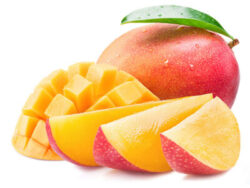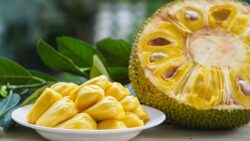Can Chickens Eat Banana Peels?
Bananas are a common fruit that are loved by plenty of people all around the world. What about their peels, though? Banana peels can hens eat them? If you own or like raising chickens, you may have pondered what foods your feathery companions should eat. This article will examine the safety of hens eating banana peels as well as the advantages and disadvantages of doing so.
Nutritional Value of Banana Peels for Chickens
Banana peels, although not typically consumed by humans, can provide certain nutritional benefits to chickens. While the flesh of a banana is rich in carbohydrates and sugars, the peel contains a different composition of nutrients. Here are some key nutritional components found in banana peels that can be beneficial for chickens:
a) Fiber: Banana peels are a good source of dietary fiber. Fiber aids in digestion and helps regulate the chicken’s bowel movements, promoting a healthy digestive system.
b) Vitamins: Banana peels contain vitamins such as vitamin A, vitamin B6, and vitamin C. These vitamins contribute to various physiological functions, including immune system support and overall health maintenance.
c) Minerals: Banana peels also contain essential minerals like potassium and magnesium, which are important for proper muscle function, nerve signaling, and bone health in chickens.
Can chickens eat banana peels?
Banana peels can be consumed by chickens. Fiber, vitamins, and minerals are all present in banana peels. But, it’s crucial to carefully wash the peels before cutting them into bite-sized pieces and introducing them gradually. To ensure a healthy diet for chickens, moderation is essential.
Chickens are omnivorous animals with a wide range of food sources. Although their main food sources are grains and seeds, they also enjoy fruits and vegetables. In moderation, banana peels can be a nutritious supplement to their diet. To safeguard the safety of your hens, it’s crucial to take a few precautions.
Also Read: Can Goats eat Strawberries? All you should know
Feasibility and Safety of Feeding Banana Peels to Chickens
Feeding banana peels to chickens can be feasible and safe, but there are important considerations to keep in mind:
a) Thorough Cleaning: Before feeding banana peels to chickens, it is crucial to ensure that the peels are thoroughly washed to remove any pesticide residues or contaminants. Organic or homegrown bananas can be preferred to minimize exposure to harmful substances.
b) Ripeness: It is generally recommended to feed ripe banana peels to chickens. Green or unripe peels may be more difficult for chickens to digest and may cause digestive issues.
c) Moderation: Banana peels should be given to chickens in moderation as a part of a balanced diet. While they can offer nutritional benefits, they should not replace other essential feed sources, such as commercial chicken feed or a varied mix of grains, seeds, and vegetables.
d) Proper Preparation: Banana peels should be cut into smaller pieces or mashed to make it easier for chickens to consume. Large chunks may pose a choking hazard.
e) Individual Sensitivities: Just like humans, chickens can have individual sensitivities or allergies. Some chickens may not tolerate banana peels well and may experience digestive upset or other adverse reactions. It’s important to monitor the chickens’ response and adjust their diet accordingly.
f) Variety in Diet: While banana peels can be offered as an occasional treat, it is essential to provide chickens with a diverse and balanced diet that includes a mix of grains, proteins, vegetables, and fruits to meet their nutritional needs.
As always, consulting with a veterinarian or poultry expert is advisable when introducing any new food items into a chicken’s diet to ensure their health and well-being.
Benefits and Drawbacks of Including Banana Peels in Chicken Diet
Benefits:
- Nutritional Boost: Banana peels can provide additional fiber, vitamins, and minerals to a chicken’s diet, supporting their overall health and digestion.
- Waste Reduction: Feeding chickens banana peels can be a way to utilize food waste, reducing the amount of discarded peels and promoting sustainability.
- Environmental Enrichment: Offering banana peels as a treat can provide mental stimulation and enrichment for chickens, keeping them engaged and preventing boredom.
Drawbacks:
- Digestive Sensitivities: Some chickens may have difficulty digesting banana peels, especially if they are not ripe or if they consume them in large quantities. Digestive issues such as diarrhea or upset stomach can occur.
- Imbalanced Diet: While banana peels can be a beneficial addition to a chicken’s diet, they should not replace essential feed sources. Relying too heavily on banana peels may lead to an imbalanced diet lacking other necessary nutrients.
- Pesticide Residues: If the banana peels have been exposed to pesticides, there is a risk of transferring those chemicals to the chickens. Thoroughly washing or using organic banana peels can help mitigate this concern.
Preparation and Serving Methods for Banana Peels to Chickens
- Washing: Ensure that the banana peels are thoroughly washed before serving to remove any contaminants or pesticide residues. Organic or homegrown bananas may be a preferable choice.
- Ripeness: Use ripe banana peels as they are easier for chickens to digest. Avoid giving green or unripe peels, which may be harder for chickens to break down.
- Cutting or Mashing: Cut the banana peels into smaller pieces or mash them to make it easier for chickens to consume. Large chunks may pose a choking hazard or be difficult for chickens to eat.
- Mixing with Other Foods: You can mix small amounts of banana peels with other feed items, such as grains or vegetables, to provide a balanced meal for the chickens.
- Treat Proportions: Banana peels should be offered as an occasional treat rather than a significant portion of their diet. Moderation is key to prevent any potential digestive issues.
- Observation: After introducing banana peels to a chicken’s diet, monitor their response. If any adverse reactions occur, such as digestive upset or changes in behavior, discontinue feeding them banana peels.
Remember, it’s always recommended to consult with a veterinarian or poultry expert to ensure the well-being and appropriate dietary needs of your chickens.
Also Read: Can You Smoke Plantain Leaves
Health Risks and Considerations When Feeding Banana Peels to Chickens
- Digestive Issues: Chickens have sensitive digestive systems, and feeding them large quantities of banana peels or unripe peels can lead to digestive upset, such as diarrhea or constipation. It is important to introduce banana peels gradually and in moderation.
- Pesticide Exposure: If the banana peels have been sprayed with pesticides, there is a risk of transferring those chemicals to the chickens. It is crucial to use organic or pesticide-free banana peels to minimize this risk. Thoroughly washing the peels can also help reduce pesticide residues.
- Allergic Reactions: Chickens, like humans, can have individual sensitivities or allergies to certain foods. Some chickens may not tolerate banana peels well and may exhibit allergic reactions or other adverse symptoms. It is essential to monitor the chickens closely after introducing banana peels and discontinue feeding if any negative reactions occur.
- Imbalanced Diet: While banana peels can offer nutritional benefits, they should not replace a balanced diet for chickens. It is important to provide a varied mix of grains, seeds, vegetables, and proteins to ensure the chickens receive all the necessary nutrients for their overall health.
Alternative Uses of Banana Peels in Chicken Coops
- Composting Material: Banana peels can be added to compost piles in the chicken coop. They provide organic matter and nutrients, contributing to the production of nutrient-rich compost that can be used as fertilizer for plants or bedding material.
- Natural Pest Control: Some chicken keepers use dried or crushed banana peels as a natural pest deterrent. Placing the peels near entry points or areas prone to pests can help repel insects or other unwanted critters.
- Dust Bath Additive: Chickens enjoy dust bathing to clean their feathers and skin. Dried and crushed banana peels can be added to the dust bath area, providing a pleasant scent and potentially soothing benefits for the chickens.
- Mulching Material: Chopped or shredded banana peels can be used as mulch around plants in the chicken coop or garden. They can help retain moisture, suppress weeds, and gradually release nutrients into the soil as they break down.
- DIY Toys and Enrichment: Banana peels can be repurposed as toys or enrichment items for chickens. Hanging or placing them in the coop can provide a source of entertainment and mental stimulation.
When using banana peels for alternative purposes in the chicken coop, ensure that they are clean and free from any contaminants. Additionally, monitor the chickens’ interaction with the banana peels to prevent ingestion of large quantities, as this may lead to digestive issues.
Expert Opinions on Feeding Banana Peels to Chickens
Dr. Justin Fowler, Poultry Nutritionist:
“Banana peels can be a nutritious addition to a chicken’s diet when fed in moderation. They offer dietary fiber, vitamins, and minerals. However, it’s important to ensure that the peels are thoroughly washed to remove any pesticide residues. Introduce banana peels gradually, starting with small amounts, and monitor the chickens’ response. If any digestive issues or adverse reactions occur, discontinue feeding them banana peels.”
Dr. Elizabeth Murray, Veterinarian:
“While banana peels can provide some nutritional benefits, it’s crucial to remember that they should not replace a balanced diet for chickens. Feeding them in excess can lead to digestive issues. Always prioritize a varied and balanced diet that includes commercial feed and other essential food sources. Additionally, consult with a veterinarian to ensure the specific dietary needs of your chickens are being met.”
Tips for Introducing Banana Peels into a Chicken’s Diet
- Start Gradually: Begin by offering small amounts of mashed or chopped banana peels as a treat, alongside their regular feed. Observe how the chickens respond to the new addition and ensure they tolerate it well before increasing the quantity.
- Monitor Digestive Health: Watch for any signs of digestive upset, such as diarrhea or changes in stool consistency. If any issues occur, reduce or discontinue feeding banana peels and consult with a veterinarian if necessary.
- Balance with Other Foods: Remember that banana peels should not be the primary component of a chicken’s diet. Offer a diverse range of other feed sources, including grains, proteins, vegetables, and fruits, to ensure balanced nutrition.
- Clean and Organic: Thoroughly wash the banana peels to remove any dirt, pesticide residues, or contaminants. If possible, choose organic or homegrown bananas to minimize the risk of pesticide exposure.
- Size and Texture: Cut the banana peels into smaller pieces or mash them to make it easier for chickens to consume. Avoid giving large chunks that may pose a choking hazard.
- Treat Proportions: Treat banana peels as occasional treats rather than a significant portion of their diet. Maintain moderation and prevent overfeeding.
- Individual Chicken Sensitivities: Keep in mind that individual chickens may have different tolerances and sensitivities. Observe each chicken’s response to banana peels and adjust their diet accordingly if any adverse reactions occur.
- Consult with Experts: Seek advice from a veterinarian, poultry nutritionist, or experienced chicken keepers for personalized guidance and recommendations based on your specific flock’s needs.
By following these tips and considering the individual needs and health of your chickens, you can safely introduce banana peels into their diet and provide them with occasional nutritional treats.
Common Misconceptions about Feeding Banana Peels to Chickens
- Banana peels are toxic to chickens: This is a misconception. Banana peels, when properly prepared and fed in moderation, are not toxic to chickens. However, it is important to ensure the peels are thoroughly washed and free from pesticide residues before feeding them to chickens.
- Feeding banana peels will make eggs taste like bananas: This is not true. The flavor of eggs is determined by what the chickens eat, but the small amount of banana peel given as an occasional treat will not significantly alter the taste of the eggs.
- Chickens can eat any part of a banana plant: While chickens can consume banana peels, other parts of the banana plant, such as the leaves or stem, are not suitable for their consumption. They may be difficult to digest and potentially pose a choking hazard.
- Feeding banana peels will cause chickens to stop laying eggs: There is no evidence to support this claim. As long as banana peels are offered in moderation and do not replace a balanced diet, they should not have a negative impact on egg production.
- Banana peels are the sole source of nutrition for chickens: This is incorrect. Banana peels should be considered as a supplemental treat and not a complete source of nutrition for chickens. A varied diet consisting of commercial feed, grains, proteins, and other vegetables is essential for their overall health.
- All chickens can safely consume banana peels: While most chickens can tolerate banana peels without issues, individual chickens may have sensitivities or allergies to certain foods. It is important to observe their response when introducing banana peels and adjust their diet accordingly if any adverse reactions occur.
Remember, it is always recommended to consult with a veterinarian or poultry expert for specific guidance and to ensure the health and well-being of your chickens when introducing new foods into their diet.
Also Read: is Bitter Melon Bad or Good For Gout?
Frequently Asked Questions
Q1: Can chickens eat banana peels?
A: Yes, chickens can eat banana peels. However, it’s important to prepare them properly, feed them in moderation, and ensure they are thoroughly washed to remove any contaminants or pesticide residues.
Q2: Are banana peels nutritious for chickens?
A: Yes, banana peels can provide nutritional benefits to chickens. They contain fiber, vitamins (such as A, B6, and C), and minerals (such as potassium and magnesium), which can support their overall health and digestion.
Q3: How should I introduce banana peels into a chicken’s diet?
A: Start by offering small amounts of mashed or chopped banana peels as a treat, alongside their regular feed. Monitor their response and digestion, and gradually increase the quantity if they tolerate it well.
Q4: Are there any health risks associated with feeding banana peels to chickens?
A: While feeding banana peels to chickens is generally safe, there are some considerations. Digestive issues can occur if chickens consume unripe peels or large quantities. Pesticide exposure and individual sensitivities should also be taken into account. Monitor your chickens’ health and consult a veterinarian if needed.
Q5: Can banana peels replace a balanced diet for chickens?
A: No, banana peels should not replace a balanced diet for chickens. They should be offered as occasional treats in moderation. Chickens require a varied diet that includes commercial feed, grains, proteins, and other vegetables to meet their nutritional needs.
Q6: Will feeding banana peels affect the taste of eggs?
A: Feeding small amounts of banana peels to chickens as an occasional treat will not significantly alter the taste of their eggs. The flavor of eggs is primarily influenced by the overall diet of the chickens.
Q7: Can all chickens safely consume banana peels?
A: While most chickens can tolerate banana peels, individual chickens may have sensitivities or allergies to certain foods. Monitor their response and adjust their diet accordingly if any adverse reactions occur.
Remember, if you have specific concerns or questions about feeding banana peels to your chickens, it is always best to consult with a veterinarian or poultry expert for personalized advice.


